
Interior Design With Nature Photography: Complete Guide
Whether you are an interior designer or an art collector, you have decided to use fine art nature photography for interior design. Your goal is
Maroon Bells is a majestic mountain range located in the Elk Mountains of Colorado, United States. The Maroon Bells peaks, Maroon Peak and North Maroon Peak, are two of the most iconic and photographed mountains in North America. Some say that these peaks are the “most photographed mountains in North America“. Others say that the mountains are “the most photographed place in Colorado”.
In either case, Maroon Bells is a popular destination for photographers and visitors from all walks of life. The towering peaks, vibrant aspen trees, and Maroon lake create a picturesque landscape that is second to none.
In addition to its natural beauty, Maroon Bells is also known for its accessibility. The area is easily accessible by car and offers a number of hiking trails that provide unparalleled views of the mountains.
The beauty and grandeur of Maroon Bells make it an excellent subject for photography, and photo prints wall art. A Maroon Bells print can bring that stunning landscape into any home, office, or interior space, and create a powerful statement.
A Maroon Bells print is not just a photograph; it is a piece of art that captures the essence of an iconic Colorado landmark. Whether displayed in a living room, bedroom, or office, a large format print can completely transform the space, creating a stunning focal point that draws the eye and inspires the imagination.
One of the great things about Maroon Bells prints is their ability to transform the mood of a room. The bright colors and sharp lines of the mountains and surrounding landscape can create a sense of energy and vitality in a space, while the tranquil blues and greens can instill a sense of calm and serenity.
A Maroon Bells print can be the centerpiece of any room, creating a powerful visual impact that draws people in and sparks conversation. Whether displayed alone or as part of a larger collection, a print can become a masterpiece that defines the character and style of the space.
Gintchin Fine Art provides an array of sizes and formats of Maroon Bells photography prints. Each print is made with the highest quality printing materials that are available today and produced in very reputable US printing labs.
For the most exceptional gallery quality prints, Gintchin Fine Art offers TruLife® acrylic, which provides a remarkable level of depth and detail that can bring the image to life. The second format option is the high-quality and long-lasting high gloss metal prints that offer vibrant colors and a unique, modern look.
Moreover, Gintchin Fine Art also offers large format prints where panoramic images can be printed at 10 feet of length, making for an impressive and breathtaking wall art piece that can elevate any interior. Additionally, custom sizes are also available to meet individual preferences and requirements.
Whether you’re an art collector or an admirer of natural beauty, Gintchin Fine Art’s gallery provides an opportunity to explore and order your dream print of Maroon Bells with ease and convenience.
The Maroon Bells are a pair of peaks located in the Elk Mountains of Colorado, USA. The peaks, which are part of the White River National Forest, have become an iconic symbol of Colorado and are one of the most photographed landscapes in North America.
The Maroon Bells in Colorado are difficult for climbers due to their weak stone and steep slopes, leading to fatalities in the past. This soft stone is the result of sediment shed from the Ancestral Rockies , claimed to have happened around 300 million years ago. It formed a thick apron of sediment that ultimately became the Maroon Bells. Over time, pressure and rusting of iron-rich minerals created the distinctive red hue of the rock. Glaciers later sculpted the soft mudstone into the peaks we see today. The red color of the rocks is due to the presence of iron oxide, which was deposited during the formation process.
The name “Maroon Bells” is said to have been coined by early explorers in the area who were struck by the reddish-maroon color of the peaks and the distinctive bell shape of the summits. The word “maroon” is derived from the French word “marron” which means chestnut or reddish-brown, and it is a fitting description of the color of the peaks.
The area surrounding the Maroon Bells has a rich history of mining and ranching, with settlers first arriving in the late 1800s. The land was later designated as a wilderness area and is now protected by the US Forest Service. Today, the Maroon Bells are a popular destination for hiking, camping, and photography, drawing visitors from around the world to experience the natural beauty of this stunning Colorado landmark.
Maroon Bells is a natural wonder that stands out for its breathtaking landscape. Located in the Elk Mountains, just outside of Aspen, Colorado, Maroon Bells is known for its striking peaks, crystal-clear lakes, and lush forests that surround the area. The Maroon Bells wilderness is named after the two distinct peaks, Maroon Peak and North Maroon Peak, which tower over the landscape at over 14,000 feet.
The area is also home to several incredible alpine lakes, including Maroon Lake, Crater Lake, and Snowmass Lake. These picturesque lakes offer spectacular reflections of the surrounding mountains. The Maroon Bells-Snowmass Wilderness Area, which encompasses the Maroon Bells, is a spectacular piece of nature steadily drawing visitors every year.
Aside from its towering peaks and pristine lakes, Maroon Bells is also unique due to its geological features. The mountains in the area are made up of sedimentary rock, which gives them their distinctive red color. The Maroon Formation, a type of sedimentary rock, is prevalent in the area and has helped shape this magnificent landscape.
Furthermore, Maroon Bells is home to a diverse range of wildlife, including black bears, moose, elk, and mountain goats. The area’s ecology is also fascinating, with a variety of plant species, including aspen trees, spruce, and fir forests.
One of the most unique aspects of Maroon Bells is how it changes throughout the seasons. Each season offers a different perspective on the area’s natural beauty, making it a perfect destination for photography and outdoor enthusiasts who want to capture and/or experience its magic all year round.
In the summer months, Maroon Bells is alive with colorful wildflowers. The area gets a significant amount of moisture, compared to other parts of Colorado, which makes the terrain very lush and green.
In the fall, Maroon Bells transforms into a brilliant canvas of reds, oranges, and yellows as the aspen trees change color. This is a popular time for photographers, as the vibrant foliage provides a great contrast against the (usually) snow-capped peaks.
Winter brings a whole new look and feel at Maroon Bells. The cold and snowy conditions can be challenging for photographers, but the results can be breathtaking. One cannot drive to the lake during the winter time. Popular modes of transportation are: snowmobiles, cross country skis, fat tire bikes, or traveling on foot. The best time to visit during winter is just after a fresh snowfall when the landscape is untouched and pristine.
Finally, in the spring, the snow melts, and the area is bathed in a fresh, green glow. This is a time of renewal and rejuvenation, and it is the perfect time to capture the beauty of the budding trees and blooming flowers.
When it comes to autumn photography, Maroon Bells is a must-visit destination. The area boasts one of the most spectacular displays of fall foliage in the world, with the golden leaves of the aspen trees contrasting beautifully with the rugged mountain backdrop. If you’re planning a photography trip to Maroon Bells during fall, you will not be disappointed.
One of the most unique parts about the fall season in Colorado is that, if you are lucky, you may witness a mix of 2 seasons all in one view: autumn and winter. The reason for this is the high vertical distance between the aspen forests and the mountain peaks. Storms are common in the fall, which bring moisture and deposit fresh snow on the mountains. This is, in my mind, one of the most beautiful scenes in the world.
Therefore, Maroon Bells is a perfect location to witness the yellow aspen trees and the snow covered peaks at the same time.
Maroon Bells is a beautiful natural landmark that is a favorite spot for photographers. Capturing the perfect photo of Maroon Bells requires an understanding of the best time of day for lighting, recommended camera settings, and suggested vantage points.
Timing is Everything
The timing of your visit is crucial for capturing the best fall foliage photos. The aspen leaves typically start changing color in mid-September, and peak color usually occurs in the last week of September or the first week of October. However, this can vary depending on the weather, so it’s always a good idea to check the foliage report before your trip.
Choose the Right Time of Day
Maroon Bells is definitely a sunrise photo location. The mountains are facing east and this creates tremendous opportunities during sunrise. Usually the first light will hit the massive vertical mountain faces, which enhances their color even more. Additionally, shooting during midday can provide you with vibrant colors of the aspen trees, but you need to be careful to avoid harsh light and shadows.
Find a Great Location
Maroon Bells has plenty of locations where you can capture the fall foliage in all its glory. One of the best places to take pictures is Maroon Lake, which offers stunning reflections of the mountains and foliage in the water. However, keep in mind that if you show up on a weekend morning in peak fall color season, you will be literally shoulder to shoulder with hundreds of other photographers. While shooting at the lake is a favorite, because of the water reflections, there are several spots, on the way to it, which also offer spectacular views.
Go After a Snow Storm
As mentioned above – one of the greatest fall scenes in Colorado is peak fall colors with a backdrop of snow covered mountains. At Maroon Bells, you get the added bonus of having the lake, whose reflection doubles all of this landscape magic.
If you search for images of Maroon Bells online you will get thousands of options, which look very similar to each other and almost identical. The classic Maroon Bells prints are a horizontal shot of the mountains, symmetrically reflected in the water, during peak fall colors.
Although this view never gets old, there are other vantage points in the area, which showcase the beauty of these mountains in more unique ways.
In addition, the area is quite spectacular during other parts of the year. Winter is one example. However, due to the added challenges of winter photography and the decreased accessibility of the area during the snow months winter photos of Maroon Bells are less common.
One of the most iconic and classic ways to photograph Maroon Bells is with a 2×3 ratio horizontal image, taken during the fall season at sunrise, with a clear reflection of the mountains in the lake. This type of photograph can create a powerful visual impact and is a favorite among photographers.
However, black and white photography can also be used to capture the beauty of Maroon Bells in a unique and artistic way. The stark contrast and tonality of black and white photography can bring out the beauty of the mountains and surrounding landscape in a way that color photography may not achieve.
Another way to showcase the beauty of Maroon Bells is by capturing it in a panoramic photo. This type of photograph can capture the full majesty of the landscape, showcasing its grandeur and breathtaking scale.
Finally, photographers can experiment with different locations to capture Maroon Bells in a new and visually striking way. By moving away from the popular Maroon Lake location, photographers can explore the surrounding wilderness and find new perspectives and angles to depict the beauty of the Bells.
Maroon Bells has become one of the most popular and photographed locations in the United States, attracting thousands of visitors each year. In 2017 alone, the area saw a significant increase of visitors, when their number rose to a record 320,500 for that year. In 2019 it was reported that visitor numbers nearly doubled in five years.
However, with the increasing popularity of Maroon Bells comes the need for responsible photography practices and ethical considerations. As a nature photographer, it’s important to adhere to Leave No Trace principles to minimize the impact on the environment and preserve the natural beauty of the area for future generations.
This means refraining from disturbing wildlife or their habitats, staying on designated trails, and packing out all trash and waste. It’s also essential to be mindful of the environment when seeking the perfect shot. This includes avoiding trampling vegetation or disturbing delicate ecosystems, such as fragile alpine tundra.
As a photographer, it’s also essential to respect other visitors to the area and avoid crowding or blocking access to popular viewpoints. By following these ethical considerations, photographers can continue to capture the breathtaking beauty of Maroon Bells while preserving the area’s natural resources for generations to come.
The Maroon Bells area is under stress from the more than 300,000 people who visit each summer and fall. Visits have led to trail erosion, garbage and human waste left behind, and trampled plants. The Leave No Trace Center for Outdoor Ethics listed the West Maroon Trailhead as one of its hotspots. Officials implemented a shuttle-bus system in 1977 to reduce pollution and it has been mandatory since, with ridership increasing 350% to an all-time high of just over 243,000 people last year. The biggest impacts of overcrowding are felt at Maroon Lake and nearby Conundrum Hot Springs.
It is crucial that all of us do our own part in order to protect this beautiful gem in Colorado.
The Maroon Bells Wilderness Area is an incredibly picturesque region in Colorado that is widely regarded as one of the most photogenic places in the United States. The unique beauty of Maroon Bells has drawn many photographers, nature enthusiasts, and tourists to the region, leading to concerns about the impact of human activity on the environment.
To protect the Maroon Bells Wilderness Area and ensure its preservation for future generations, there have been ongoing conservation efforts. The U.S. Forest Service has implemented several policies to protect the ecosystem of the area, including restrictions on camping, campfires, and motorized vehicles. Additionally, the Maroon Bells Scenic Area has been designated as a Wilderness Area, which means that it is protected from development and commercial activities.
The Maroon Bells Scenic Area, located 11 miles southwest of Aspen, is a popular destination for out-of-town visitors, but local residents are less likely to visit due to perceived crowding and challenges of access. The reservation system, which was introduced during the COVID-19 pandemic, has remained in place as a tool to manage crowds.
Survey results show that visitors support the system, and only a small percentage feel the area is crowded. However, partners in the Maroon Bells Stakeholders Group are concerned that the area will resume its trajectory of increased visitation once normal travel patterns stabilize, and different management practices may be needed.
Planning is underway for the management of Maroon Bells Scenic Area in Colorado, where visitation has doubled over the past decade. Several agencies, including local and federal governments, are collaborating on the plan, and a public workshop is being held to gather input before the process progresses further.
Officials have already implemented reservations for vehicle parking and shuttle rides due to high demand and are now exploring the possibility of fees and permits for backpacking the broader wilderness. A “comprehensive plan” is needed to address the impacts of increasing visitation and identify sustainable levels of access while accounting for local economic and other community impacts.
Aspen, Colorado, is a charming mountain town that is renowned for its luxurious ski resorts and breathtaking natural beauty. Located 11 miles from the Maroon Bells, Aspen is the gateway to this incredible landmark.
In addition to its close proximity to the Maroon Bells, Aspen also boasts a vibrant art scene. The town is home to numerous galleries and museums that showcase the work of photographers and artists. Some of the most popular art venues in Aspen include the Aspen Art Museum, the Red Brick Center for the Arts, and the Anderson Ranch Arts Center, located in neighboring Snowmass Village.
The Aspen Art Museum is a contemporary art museum that features a diverse collection of modern art, including photography. The museum regularly hosts exhibitions that showcase the work of emerging and established photographers from around the world.
The Red Brick Center for the Arts is a community art center that offers classes, workshops, and exhibitions in a variety of mediums, including photography. The center also hosts an annual photography exhibition that highlights the work of local photographers.
The Anderson Ranch Arts Center is a world-renowned arts organization that offers workshops, residencies, and classes in a variety of mediums, including photography. The center hosts a number of photography workshops throughout the year, taught by professional photographers and educators.
The Maroon Bells Wilderness area is a paradise for hiking and backpacking enthusiasts. With miles of trails to explore, visitors can experience fantastic natural scenery and breathtaking views of the Maroon Bells.
One of the best ways to experience the Maroon Bells is by taking a hike. The wilderness area offers a wide range of trails, from easy day hikes to challenging multi-day backpacking trips. Visitors can choose from several well-maintained trails that lead to scenic destinations, such as Crater Lake, West Maroon Pass, and Snowmass Lake.
As visitors hike through the Maroon Bells Wilderness area, they’ll have plenty of opportunities to capture incredible photographs. From the colorful wildflowers in the summer to the golden aspen trees that light up the area in the fall, the Maroon Bells offer endless photo opportunities.
Backpacking is another popular way to explore the Maroon Bells Wilderness area. Backpackers can spend several days on the trail, camping in designated backcountry campsites and immersing themselves in the beauty of the area. With a backpack full of camping gear and camera equipment, backpackers can capture amazing photographs of the Maroon Bells and the surrounding wilderness.
Photography can enhance the outdoor experience in many ways. By capturing images of the Maroon Bells, hikers and backpackers can share their experiences with others and inspire them to explore the wilderness area. Photographs can also serve as a way to remember the beauty of the Maroon Bells long after the outdoor adventure is over.
My personal experience with Maroon Bells spans across several visits, during each season of the year. As a passionate photographer, and outdoor enthusiast, I have had the opportunity to capture the beauty of this location with my own camera. The beautiful Maroon Bells area holds a special place in my heart, and I firmly believe it is one of the most beautiful places I have ever seen, despite having traveled to numerous countries and visited natural beauty around the world.
During my visits, I have traveled to the area by various means of transportation, including car, bike, and cross-country skis. While driving is undoubtedly the most convenient option, I find that being outside and immersing myself in the valley leading up to Maroon Bells is an incomparable experience.
Among my visits, two stand out as particularly memorable. One occurred during a summer morning when I witnessed a breathtaking light show, as the rising sun pierced through the clouds to illuminate the peaks. The other occurred during a low-visitor season (in the winter) when I cross-country skied in the dark to reach Maroon Bells by sunrise. For three hours, I had the entire location to myself, which was a surreal and awe-inspiring experience.

Whether you are an interior designer or an art collector, you have decided to use fine art nature photography for interior design. Your goal is

How to Light Fine Art Photography Prints and Wall Art Knowing how to light artwork in your home or business can be the difference between
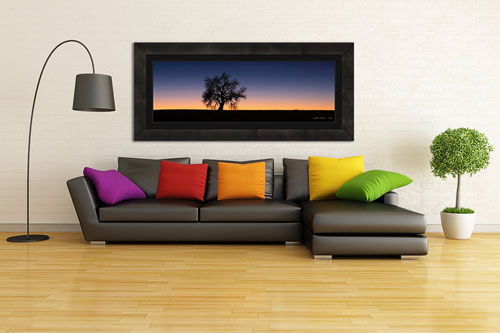
How do you choose the right frame for a landscape print? Mounting a high quality frame around a landscape print can create an impressive piece
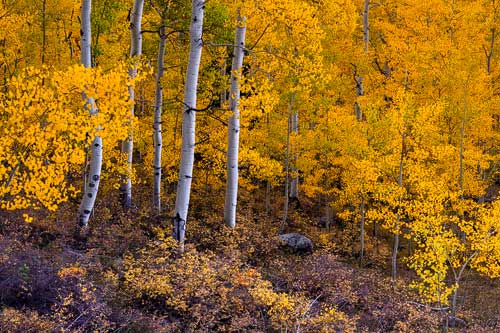
Many people go out to see the fall colors in Colorado, but how many truly experience this annual ritual of nature? As a landscape photographer
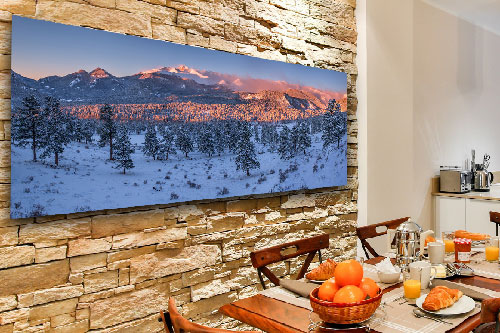
Did you know that the color temperature of a light source can dramatically affect your photographic prints? Understanding color temperature for prints lighting can help
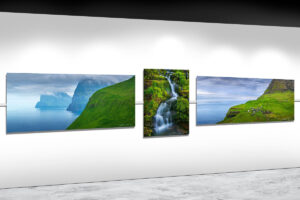
DESIGN A HOME PHOTO & WALL ART GALLERY WALL Create a home gallery wall and make it look professional. Whether you use photography prints, or
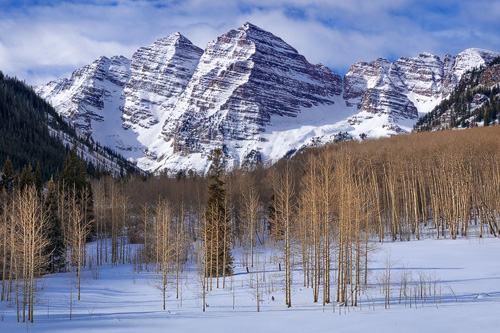
Maroon Bells winter photography can be quite an exhilarating experience. This Colorado gem is a popular landscape photography destination, especially during the fall. For this
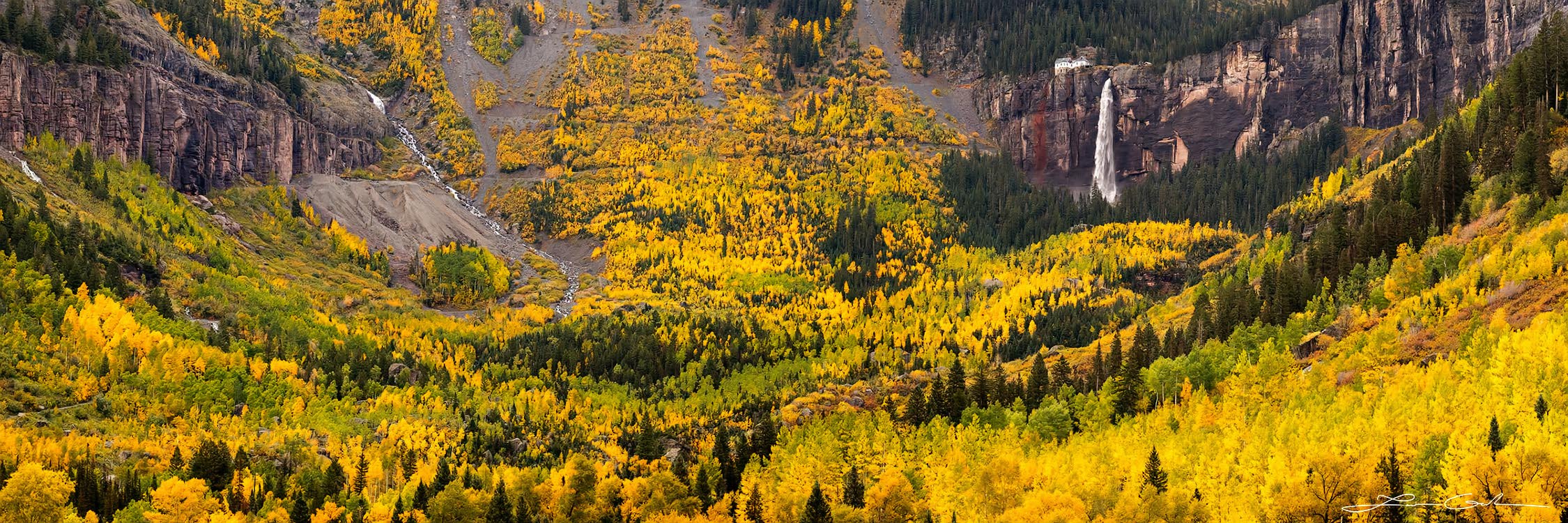
Telluride Fine Art Photography Gallery LARGE FORMAT PRINTS The Telluride fine art collection presented in this online gallery showcases the beauty of the San Juan

Colorado Panoramic Fine Art Photography Limited Edition Masterworks | Art Gallery Welcome to my Colorado Panoramic Photography gallery. Here you will find some of the
Gintchin Fine Art offers exclusive limited edition fine art photography by Lazar Gintchin, a nature and landscape photographer specializing in large format size prints. Each image in Gintchin’s portfolio is a unique and limited edition print. The gallery includes high-quality wall art prints in acrylic and metal mediums, providing a luxurious fine art presentation. With a diverse range of genres to choose from, art enthusiasts can curate a collection that reflects their aesthetic preferences.